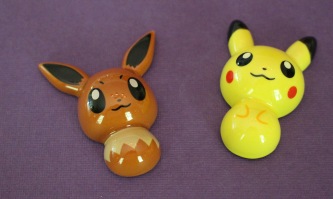This fall, when I was reading a book completely unrelated to hashioki or chopstick rests (1), I came across a Japanese proverb which states:
“Sit —even on a stone – for three years.”
The author of that book interpreted this proverb to mean that if do something devotedly for three years that you’ll experience a positive outcome. My interpretation is a little different. I would say that the proverb suggests that after you do something thoroughly for three years it may be time to move along.
I’ve been writing this blog for three years.
My takeaway has been both positive and not-so-positive. On the plus side, I have shared by fascination with hashioki in more than 150 posts, and I believe I have proved my original thesis that these small objects are a very significant bridge to Japanese culture. On the other hand, I’ve a had a loyal but very small audience, and failed in my secret hope to transmit my hashioki obsession to hundreds or thousands or even millions of others.
So this is my last post. And in it I’m featuring my last hashioki purchase, which is a chopstick rest in the shape of a takamakura 高枕, or high pillow, which was used by Japanese geisha to preserve their elaborate hairstyle while they slept. The user would place the takamakura beneath their neck when sleeping on her back or side so her head wouldn’t touch the futon. This particularly takamakura features a pillow top, probably stuffed with buckwheat hulls, and held in place by the gold cord you see in the middle.
As I have written previously, when I saw this hashioki for sale on Etsy.com I knew it would be my last purchase, and the subject of my last post, because it seemed so appropriate. I like it because it alludes to Japanese culture in a subtle way – unlike a fan or a maneki neko, you need to have a little knowledge to spot the connection. As I explained in an early post (“Shapes,” May 2016), one of the common shapes for hashioki is an ingot or brick-with-a-curved-top shape very similar to the shape of a takamakura. And finally, I like it because it’s beautiful – as all the best hashioki are!
If you’re reading this, thank you for allowing me to share my fondness for hashioki with you.
Mimi
(1)Greenwood, Gesshin Claire. Bow First, Ask Questions Later. Somerville, MA: Wisdom Publications, 2018, p. 185. The book is a very provocative memoir by a young American-woman about her experience become a Zen Buddhist nun and teacher in Japan.
© Mimi Dollinger and http://www.hashioki.wordpress.com, 2015-2018. Unauthorized use and/or duplication of this material without express and written permission from this site’s author and/or owner is strictly prohibited. Excerpts and links may be used, provided that full and clear credit is given to Mimi Dollinger and wwww.hashioki.wordpress.com with appropriate and specific direction to the original content.


 created in Yasugi City, Shimane prefecture (on the southwest coast of the main Honshu island), during the Edo or Tokugawa period (1608 – 1868).
created in Yasugi City, Shimane prefecture (on the southwest coast of the main Honshu island), during the Edo or Tokugawa period (1608 – 1868). Japan just west of Niigata.
Japan just west of Niigata. This bellflower (kikyo) chopstick rest makes my heart beat faster because it is so elegant. It’s much more than it appears to be; if you look closely, you can see the petals have feint vertical lines, and that those lines continue in gray in the small indentation in the middle of the piece. Scholar Merrily Baird says that the bellflower has been lauded by poets and artists since the Heian period, so perhaps Shonagon was familiar with the flower.
This bellflower (kikyo) chopstick rest makes my heart beat faster because it is so elegant. It’s much more than it appears to be; if you look closely, you can see the petals have feint vertical lines, and that those lines continue in gray in the small indentation in the middle of the piece. Scholar Merrily Baird says that the bellflower has been lauded by poets and artists since the Heian period, so perhaps Shonagon was familiar with the flower. urushilacquer with two splashes of red lacquer across the top. It’s surfaces are uneven; it feels like lacquered lava. I purchased it in an art gallery in Kyoto. I think Shōnagon would have appreciated that it came from the city where she lived and wrote, and that it was made by a skilled artisan. This rest is very light, and it at first appears to be delicate, but lacquer is in fact quite strong — a little like Shōnagon herself. Most lacquer ware is very formal and stylized, with detailed decorations or scenes, but this piece is rough and raw, symbolizing the passionate nature of the artisan who made it.
urushilacquer with two splashes of red lacquer across the top. It’s surfaces are uneven; it feels like lacquered lava. I purchased it in an art gallery in Kyoto. I think Shōnagon would have appreciated that it came from the city where she lived and wrote, and that it was made by a skilled artisan. This rest is very light, and it at first appears to be delicate, but lacquer is in fact quite strong — a little like Shōnagon herself. Most lacquer ware is very formal and stylized, with detailed decorations or scenes, but this piece is rough and raw, symbolizing the passionate nature of the artisan who made it. This chopstick rest is much more restrained, but very romantic. It’s a rolled scroll with a Chinese ink-style painting of two people in a boat sliding under a weeping tree branch. Are the people travelers or tradespeople, or could they be two lovers escaping on a rendezvous? Could the figures be Shōnagon and one of her lovers?
This chopstick rest is much more restrained, but very romantic. It’s a rolled scroll with a Chinese ink-style painting of two people in a boat sliding under a weeping tree branch. Are the people travelers or tradespeople, or could they be two lovers escaping on a rendezvous? Could the figures be Shōnagon and one of her lovers? document tied with a gilded ribbon. The surface is rough, like handmade Japanese paper. Perhaps it’s some sort of official communique… or perhaps it’s a message from a lover or potential lover. Maybe it’s the invitation to a tryst floating down a stream, as illustrated in the hashioki above.
document tied with a gilded ribbon. The surface is rough, like handmade Japanese paper. Perhaps it’s some sort of official communique… or perhaps it’s a message from a lover or potential lover. Maybe it’s the invitation to a tryst floating down a stream, as illustrated in the hashioki above. The last hashioki that makes my heart beat fast is this matsu pine tree. I bought it because it reminds me of the matsu pine that is the backdrop for every Noh drama stage. Noh drama didn’t begin until the 14thcentury, so after Shonagon’s time, but Noh plays are based on Japanese tales that can date back to the 12thcentury, so some of the stories were undoubtedly familiar to Shonagon. Noh drama is very stylized, dramatic yet restrained, and rather shrill – probably a lot like Shonagon was herself.
The last hashioki that makes my heart beat fast is this matsu pine tree. I bought it because it reminds me of the matsu pine that is the backdrop for every Noh drama stage. Noh drama didn’t begin until the 14thcentury, so after Shonagon’s time, but Noh plays are based on Japanese tales that can date back to the 12thcentury, so some of the stories were undoubtedly familiar to Shonagon. Noh drama is very stylized, dramatic yet restrained, and rather shrill – probably a lot like Shonagon was herself. The most elegant leaves in the world belong to a living fossil.
The most elegant leaves in the world belong to a living fossil. poor soil and polluted air.
poor soil and polluted air. The ginkgo owes the unusual spelling of its name to Engelbert Kaempfer, a German physician and naturalist who lived in Japan from 1690-1692.
The ginkgo owes the unusual spelling of its name to Engelbert Kaempfer, a German physician and naturalist who lived in Japan from 1690-1692.

 years. In Japan many crafts or styles of a craft are located solely in one specific town or geographic region, meaning that if an item is genuine Bizen-yaki it was made in Imbe, and if it was made somewhere else than it is merely Bizen-style.
years. In Japan many crafts or styles of a craft are located solely in one specific town or geographic region, meaning that if an item is genuine Bizen-yaki it was made in Imbe, and if it was made somewhere else than it is merely Bizen-style.




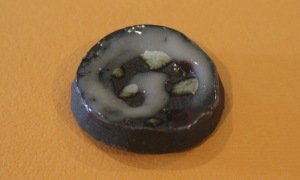 The term mingei, meaning “folk arts” or “folk crafts,” was created in 1926 by Japanese philosopher Yanagi Soetsu. According to Yanagi, the most beautiful objects a country could produce weren’t the works of individual skilled creative artists but were instead objects made by ordinary people for practical use which reflected patterns and values handed down by generations of their fellow countrymen.
The term mingei, meaning “folk arts” or “folk crafts,” was created in 1926 by Japanese philosopher Yanagi Soetsu. According to Yanagi, the most beautiful objects a country could produce weren’t the works of individual skilled creative artists but were instead objects made by ordinary people for practical use which reflected patterns and values handed down by generations of their fellow countrymen.
 Mingei items often have a rough-hewn look, like this white hashioki with 3-D swirls on top, or these blue and green in the shape of a traditional Japanese kura storehouse and a bird. The pieces were formed by hand, not by machine, and they appear to have been glazed in a wood-ash
Mingei items often have a rough-hewn look, like this white hashioki with 3-D swirls on top, or these blue and green in the shape of a traditional Japanese kura storehouse and a bird. The pieces were formed by hand, not by machine, and they appear to have been glazed in a wood-ash  kiln. The kura storehouse piece is particularly appropriate because that is the shape of the MingeikanJapanese Folk Crafts Museum founded by Yanagi in a Tokyo suburb.
kiln. The kura storehouse piece is particularly appropriate because that is the shape of the MingeikanJapanese Folk Crafts Museum founded by Yanagi in a Tokyo suburb.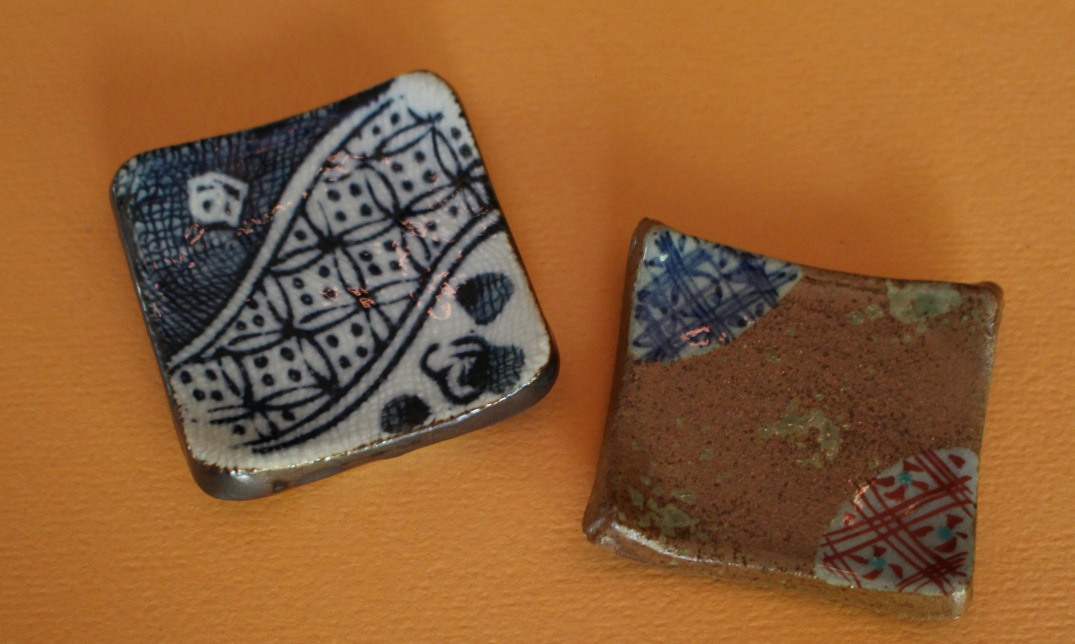 surface to replicate the texture of a textile. The one on the right purposely combines different patterns, suggesting a mended article or a patchwork quilt. Both styles of decoration have mingei roots.
surface to replicate the texture of a textile. The one on the right purposely combines different patterns, suggesting a mended article or a patchwork quilt. Both styles of decoration have mingei roots.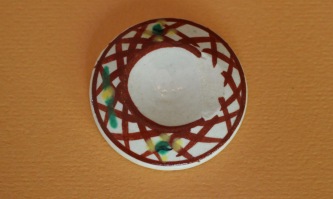 This last hashioki, which was labeled as a mingei piece by the vendor, is very handsome, but doesn’t really fit the definition of mingei. It’s too symmetrical, too orderly, and obviously made by a machine. I’ve included it here as a testament to the power of labeling.
This last hashioki, which was labeled as a mingei piece by the vendor, is very handsome, but doesn’t really fit the definition of mingei. It’s too symmetrical, too orderly, and obviously made by a machine. I’ve included it here as a testament to the power of labeling.





































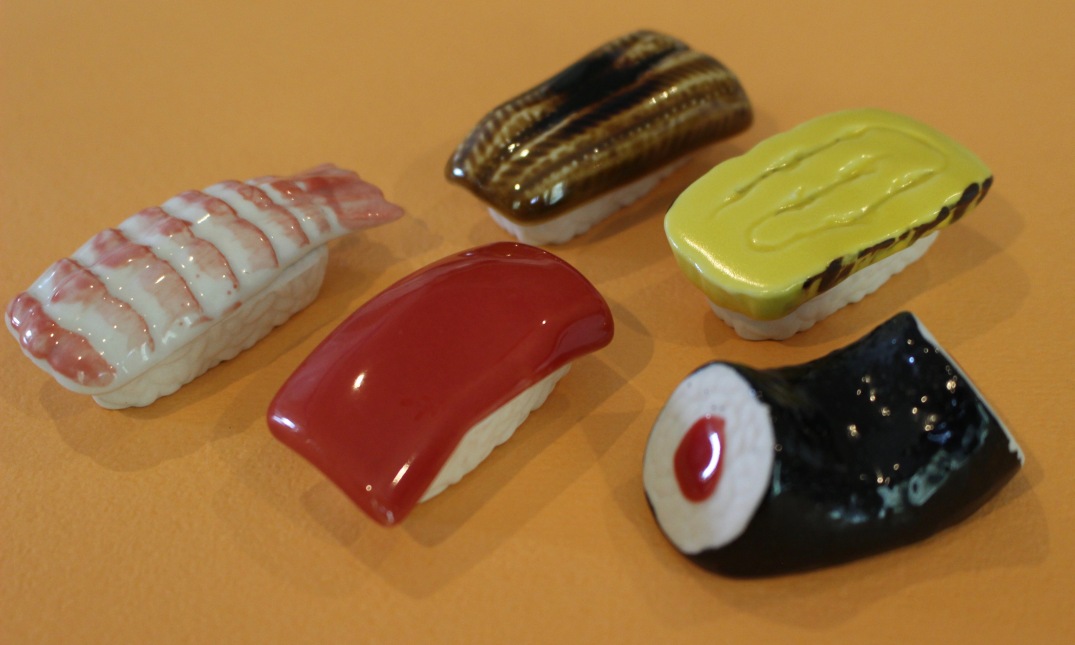







 If Hello Kitty has a marketing rival, it’s undoubtedly a creature from Hayao Miyazaki and Studio Ghibli, like this little fellow from “My Neighbor Totoro.” This animated film is 30 years old, and sales featuring its characters are still going strong.
If Hello Kitty has a marketing rival, it’s undoubtedly a creature from Hayao Miyazaki and Studio Ghibli, like this little fellow from “My Neighbor Totoro.” This animated film is 30 years old, and sales featuring its characters are still going strong.